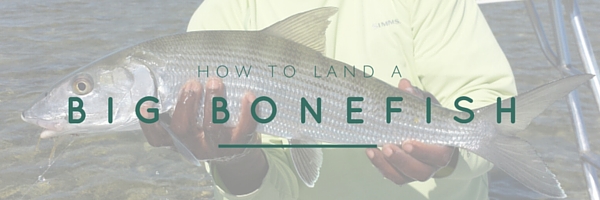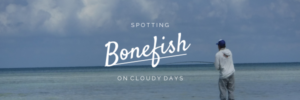The only thing better than catching a bonefish is catching a big one. This isn’t something that happens by chance. Bonefishing takes a lot of careful calculation, especially if you’re hoping to haul in a record-breaker. Fortunately, with the right flies, fly placement, stripping techniques and focus, you too can find and land a huge bonefish.
Choose The Right Fly
Pick the heaviest possible fly for the current fishing conditions. Big bonefish won’t take a fly that doesn’t plunge hard and stay near the flat bottom. You’ll know when your fly is too light because fish that follow it will invariably start to rise up in the water column. If the fly doesn’t look and behave like a recognized food source, bonefish won’t engage. This makes it best to continue changing flies throughout the day based upon the current conditions and the fly weight. Ultimately, your fly has to get down to the level of the bonefish before they pass right over it.
Check out this related blog post: Choosing The Right Fly
Be Mindful Of The Bottom
In the summertime, the best places to look for bonefish are in shallow, rocky points. These get an optimal amount of water flow which brings in some fairly large crabs. The crabs draw in big bonefish in search of larger meals. Bonefish use these feasting opportunities to fatten themselves up before winter arrives. You can use them to increase the size of your haul. Throughout the winter months, soft mud bottoms tend to attract the most bonefish. There are warm pockets of water within this mud that hold a lot of large food.
Cold Fronts
Big bonefish are best found during the very first cold fronts of the season. Their larger body mass allows them to stay on the flats which has cooler water during the cold fronts.These fronts stall out quickly and lead to light rains, overcast skies and relatively calm conditions. This is yet another opportunity for bonefish to feast before the temperatures drop significantly and another chance for you to make the catch of a lifetime.
Limit Stripping And Watch How The Bonefish React
Mimicry is one of the most important aspects of your approach. You want bonefish to react to your fly just like they would to any other food. In addition to choosing the right fly weight, pay attention to how they respond to your fly when stripping. Many people are tempted to strip way too much. A quick, three-inch strip, however, will give the fly an abrupt bump. This causes it to raise up off the flat bottom and then dart right back down again, just like a crab would while on the move. It’s important to always present your fly so that it looks like food that’s fleeing from a predator. Anything else might scare the bonefish away. In most instances, one quick bump should be sufficient. Let your fly plunge and let bonefish do what they are naturally inclined to do.
Lower You Rod Tip For A Slow Strip Strike
Subtlety and stealth are just as important as mimicry when targeting big bonefish. When stripping the line, keep your rod tip down and angled into the water. This will limit slapping sounds from the line that could alert big bones to your presence and scare them off. You can make a long, low strip strike off to one side while the fish eats. Bonefish might miss your fly on the first drop but with the right stripping techniques, you can still capitalize on these opportunities. Doing the slow strike enables you to stop, let the fly plunge and get a second bite.









